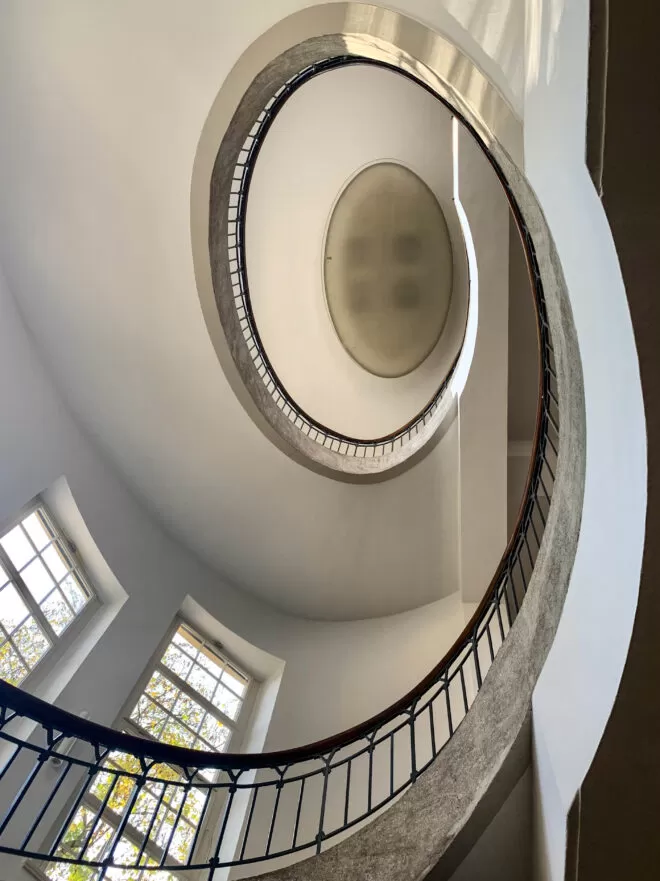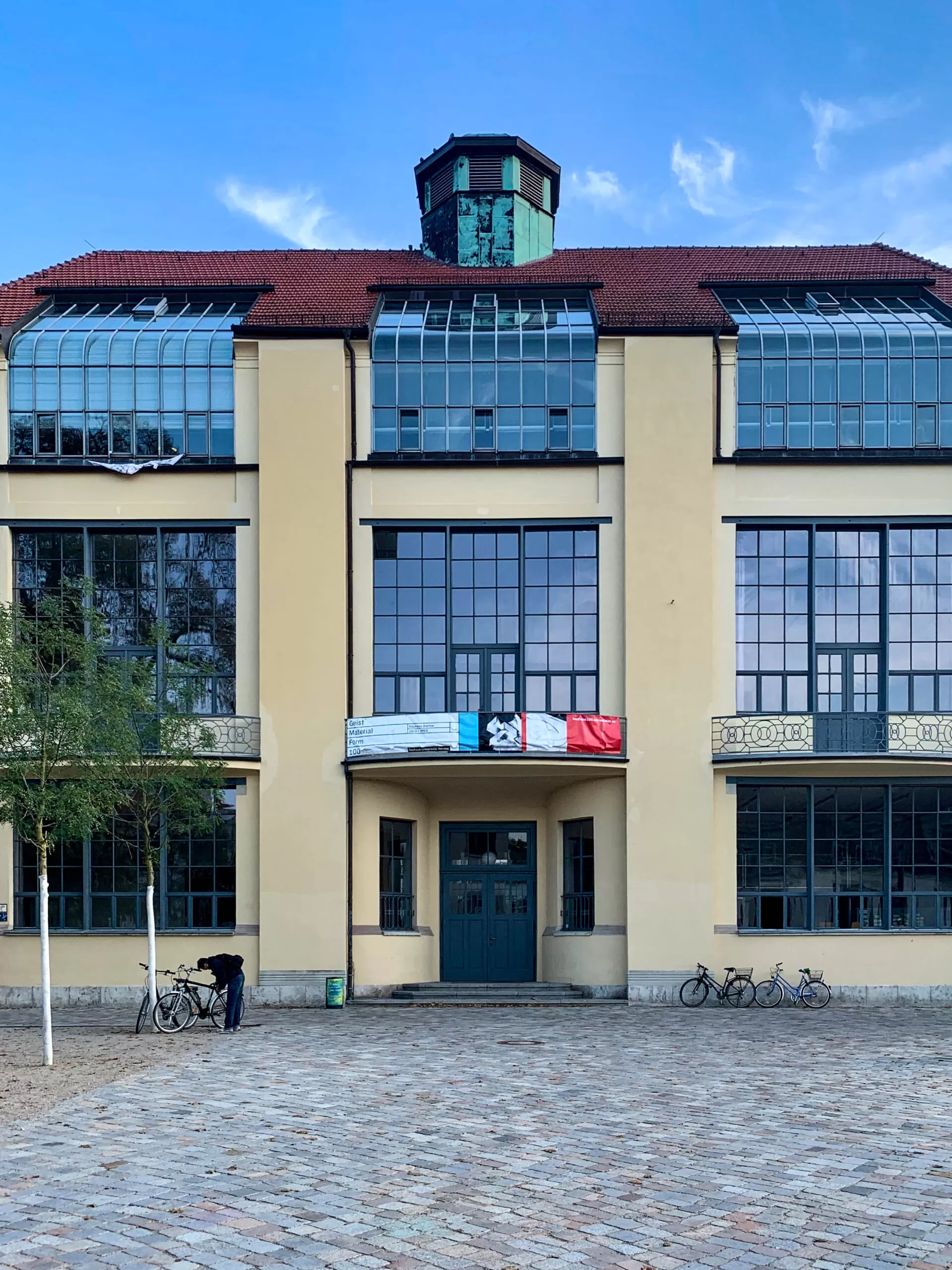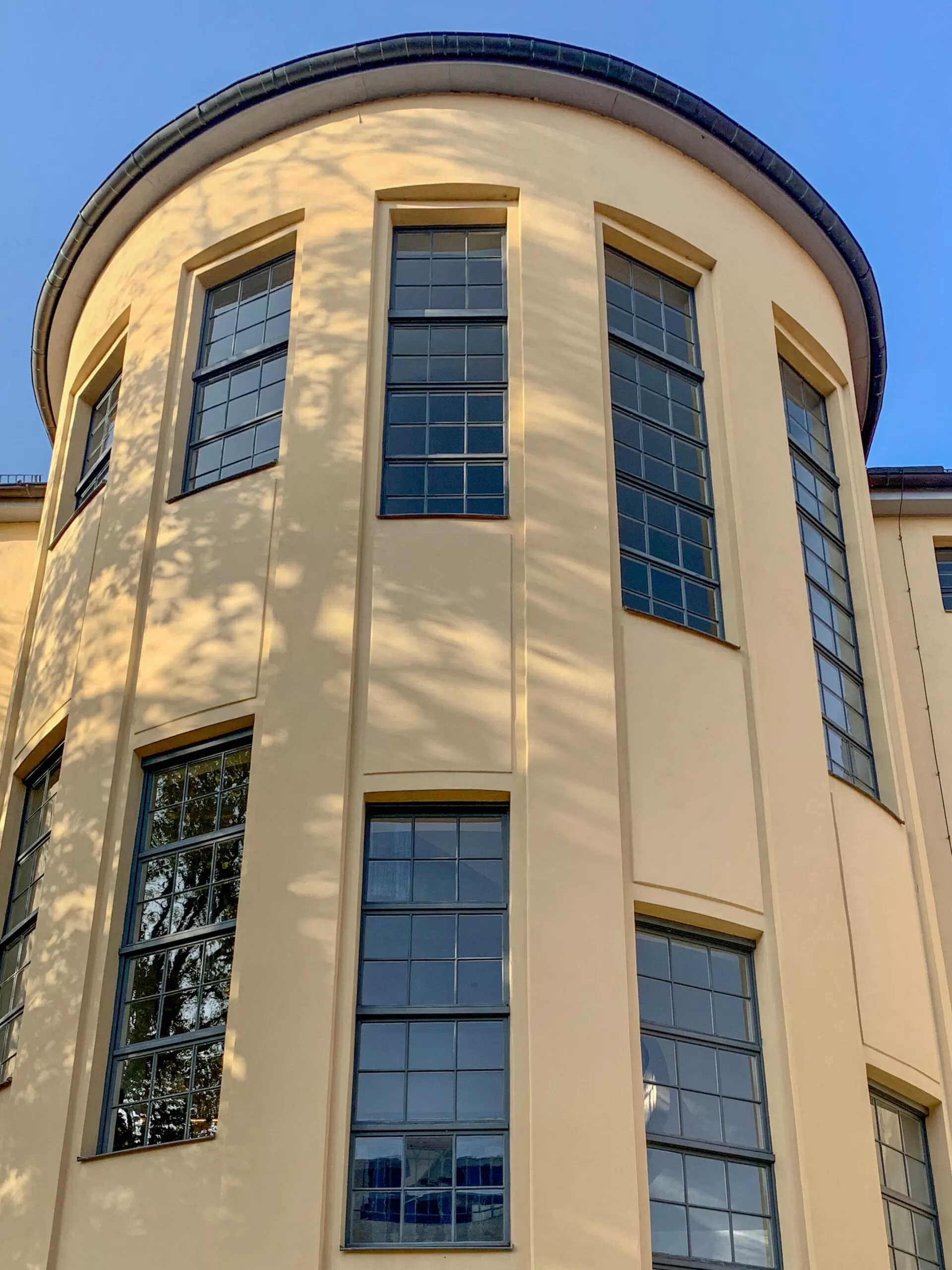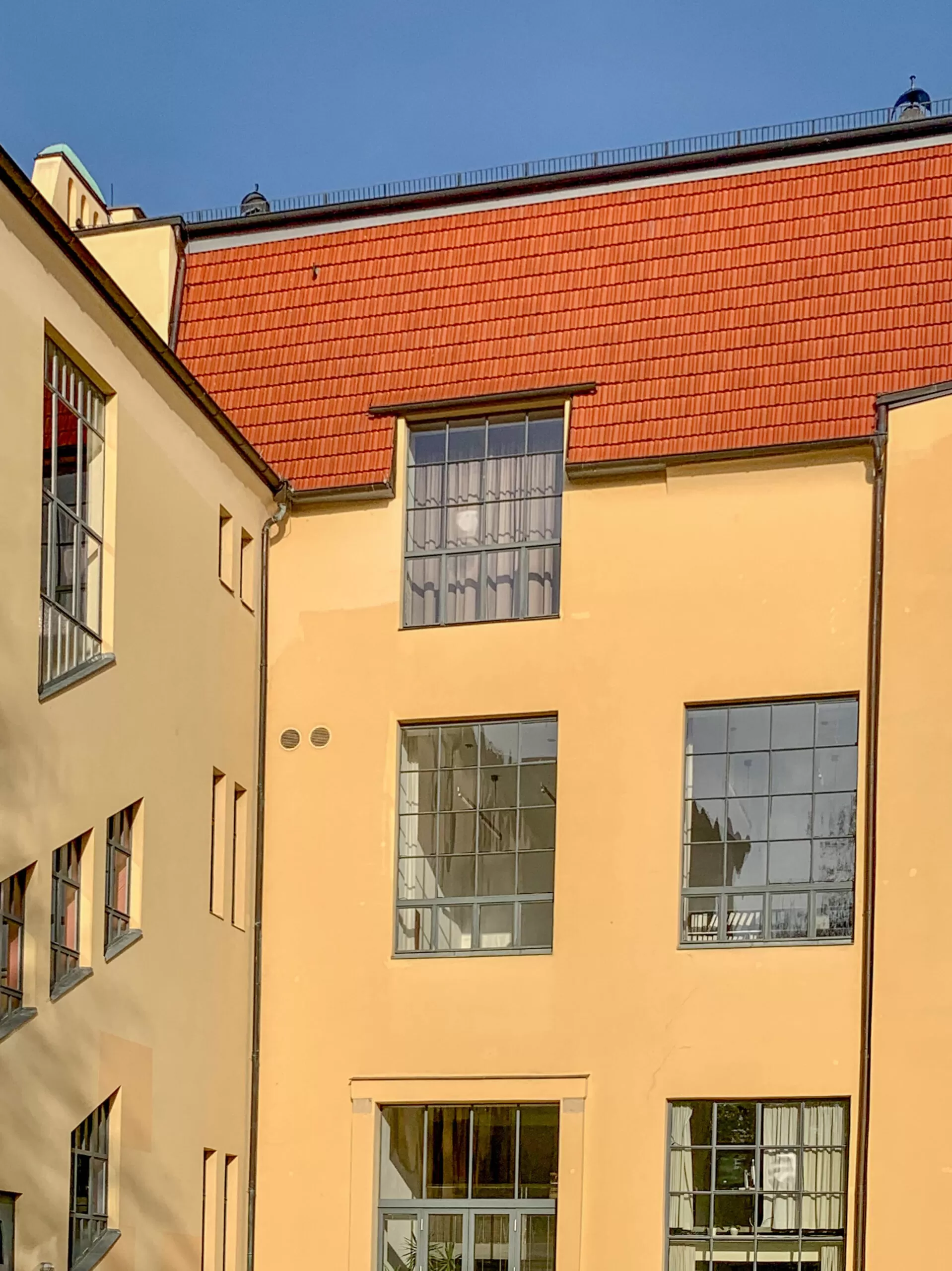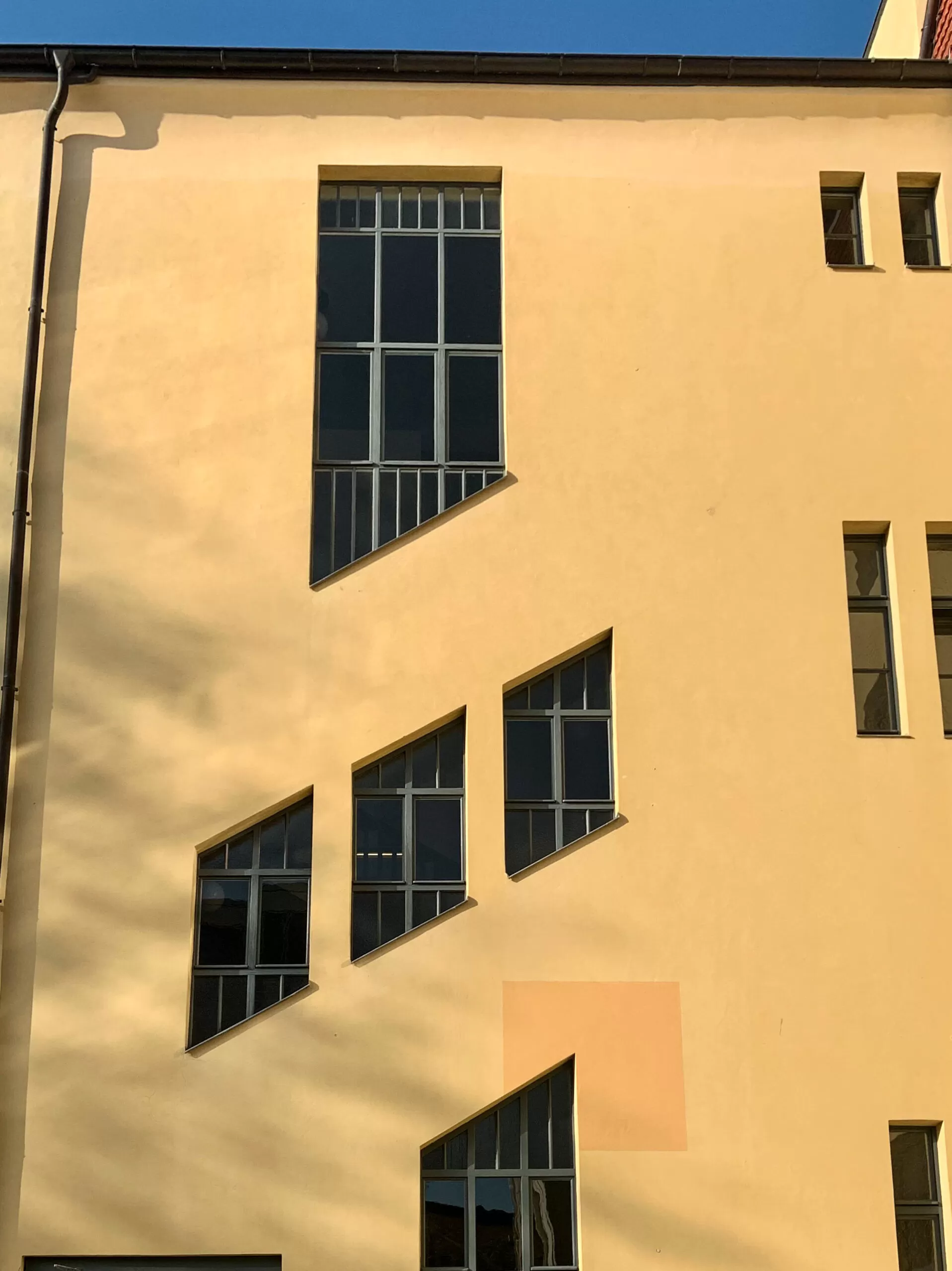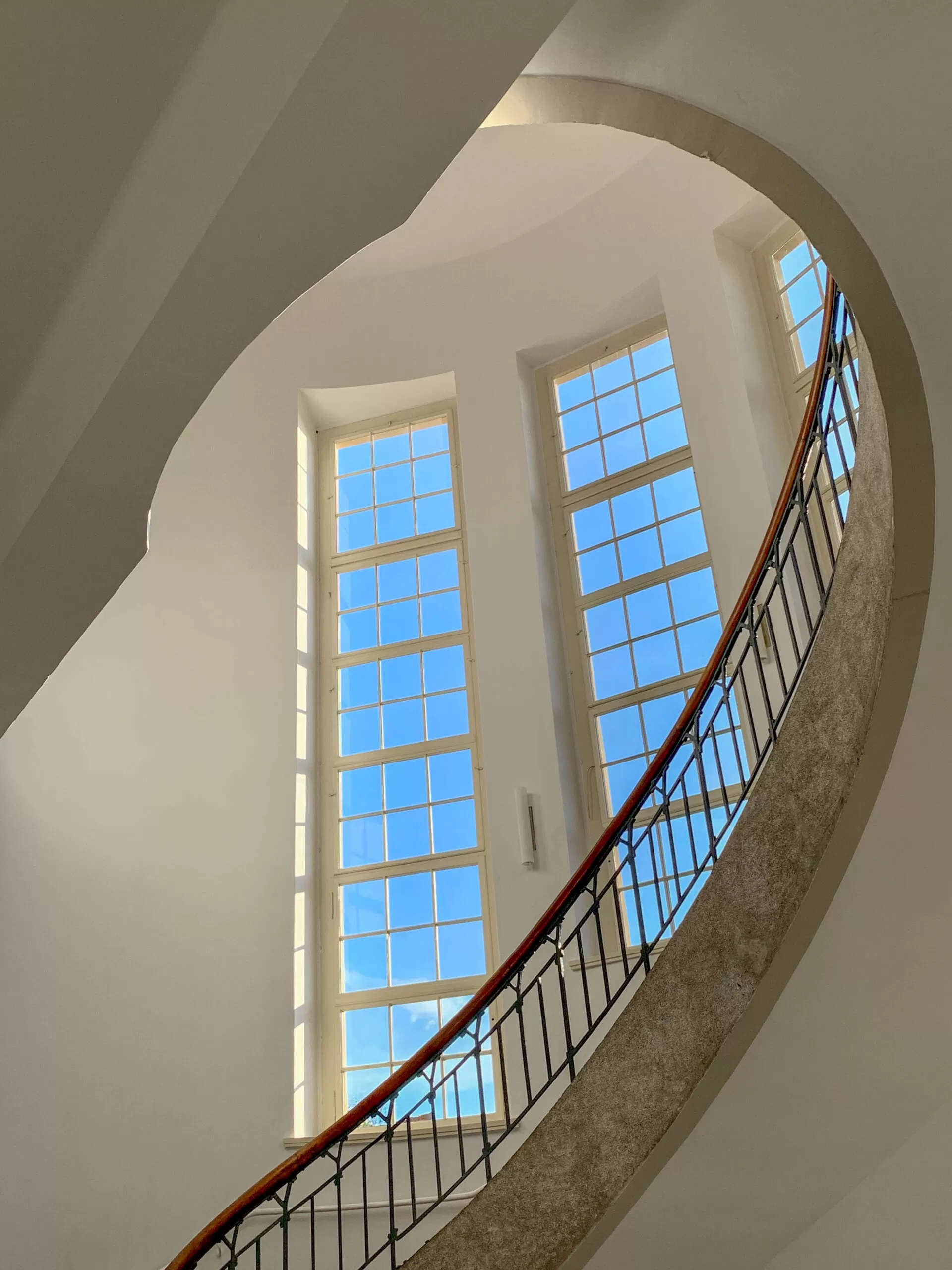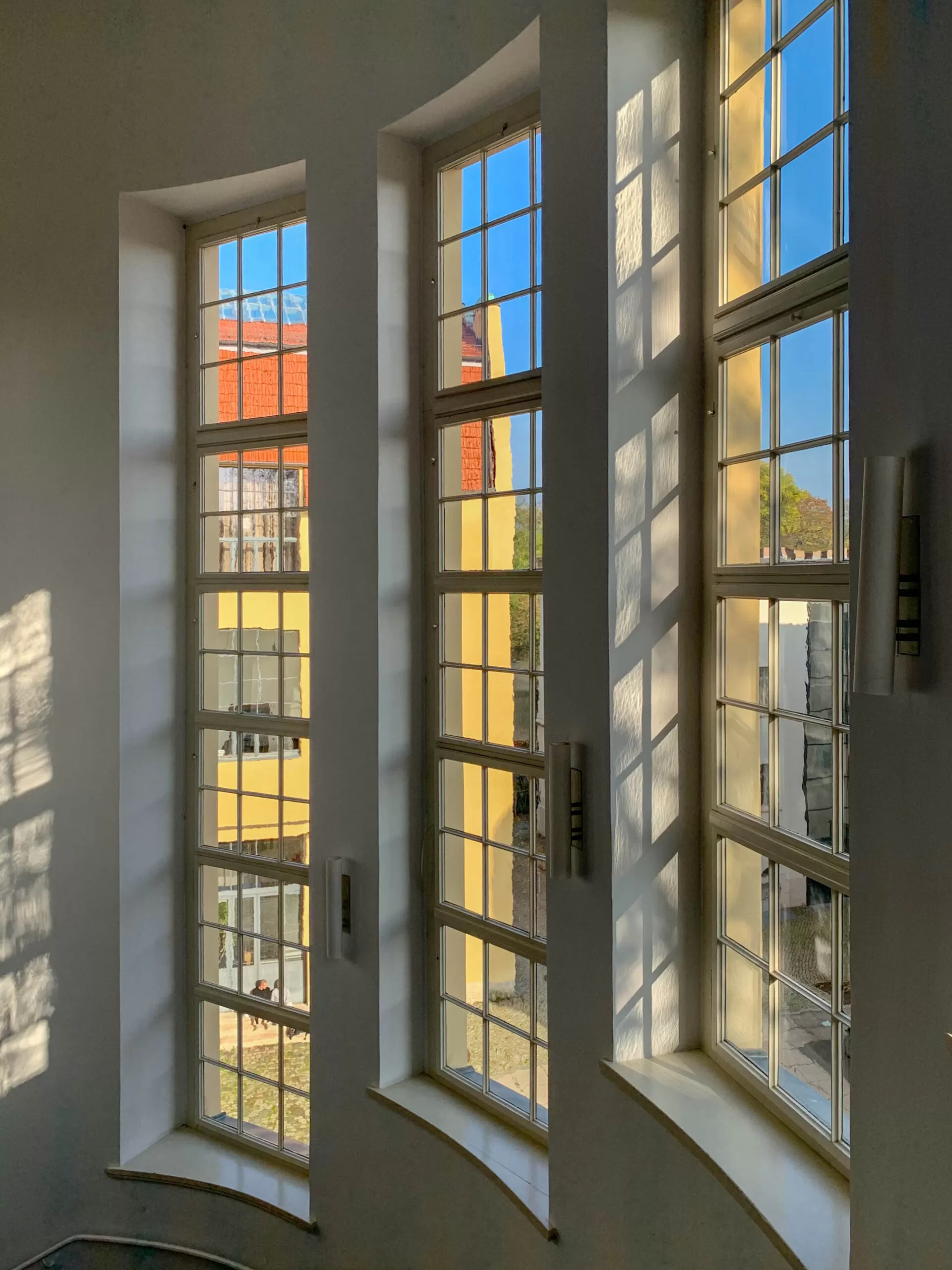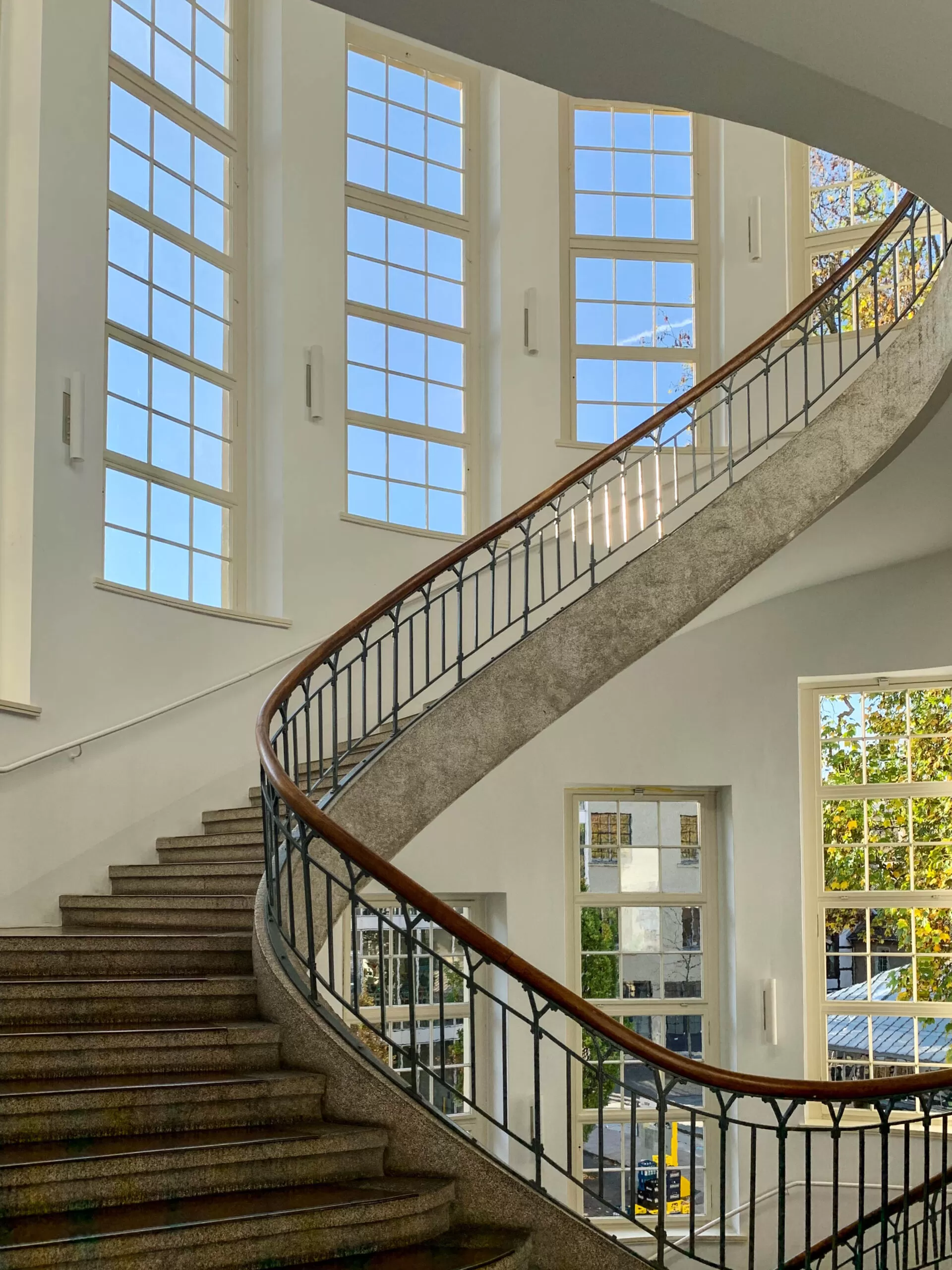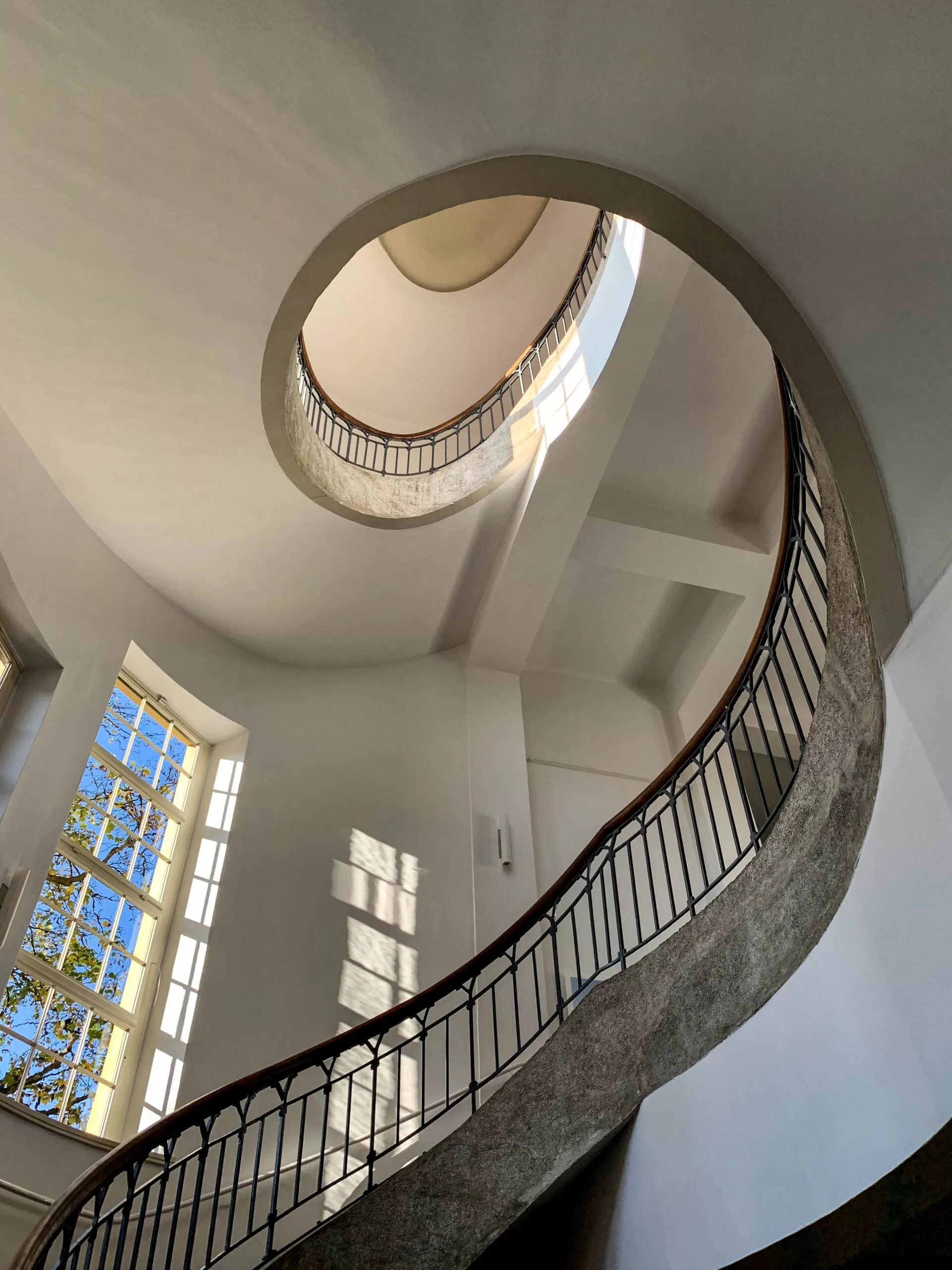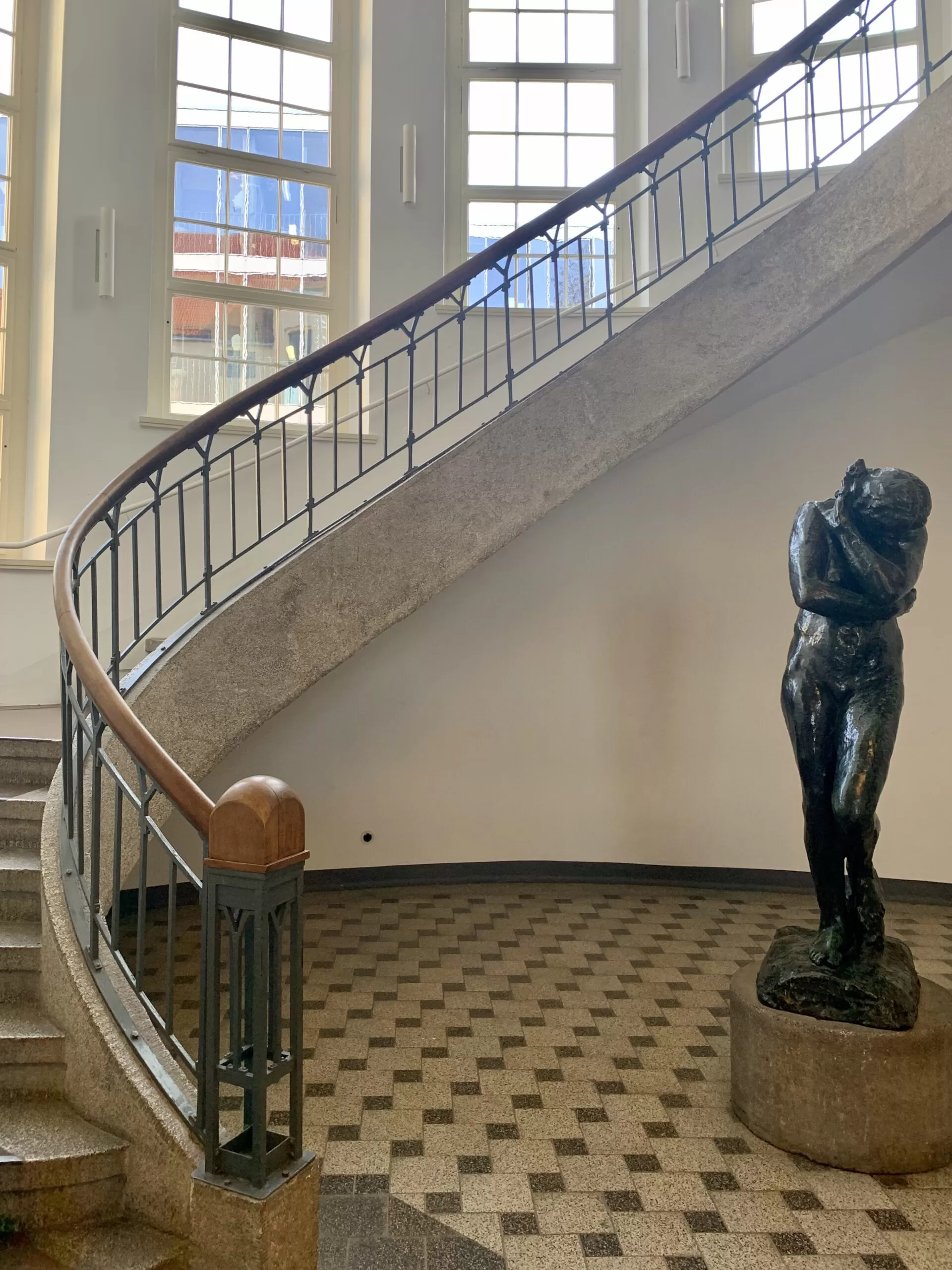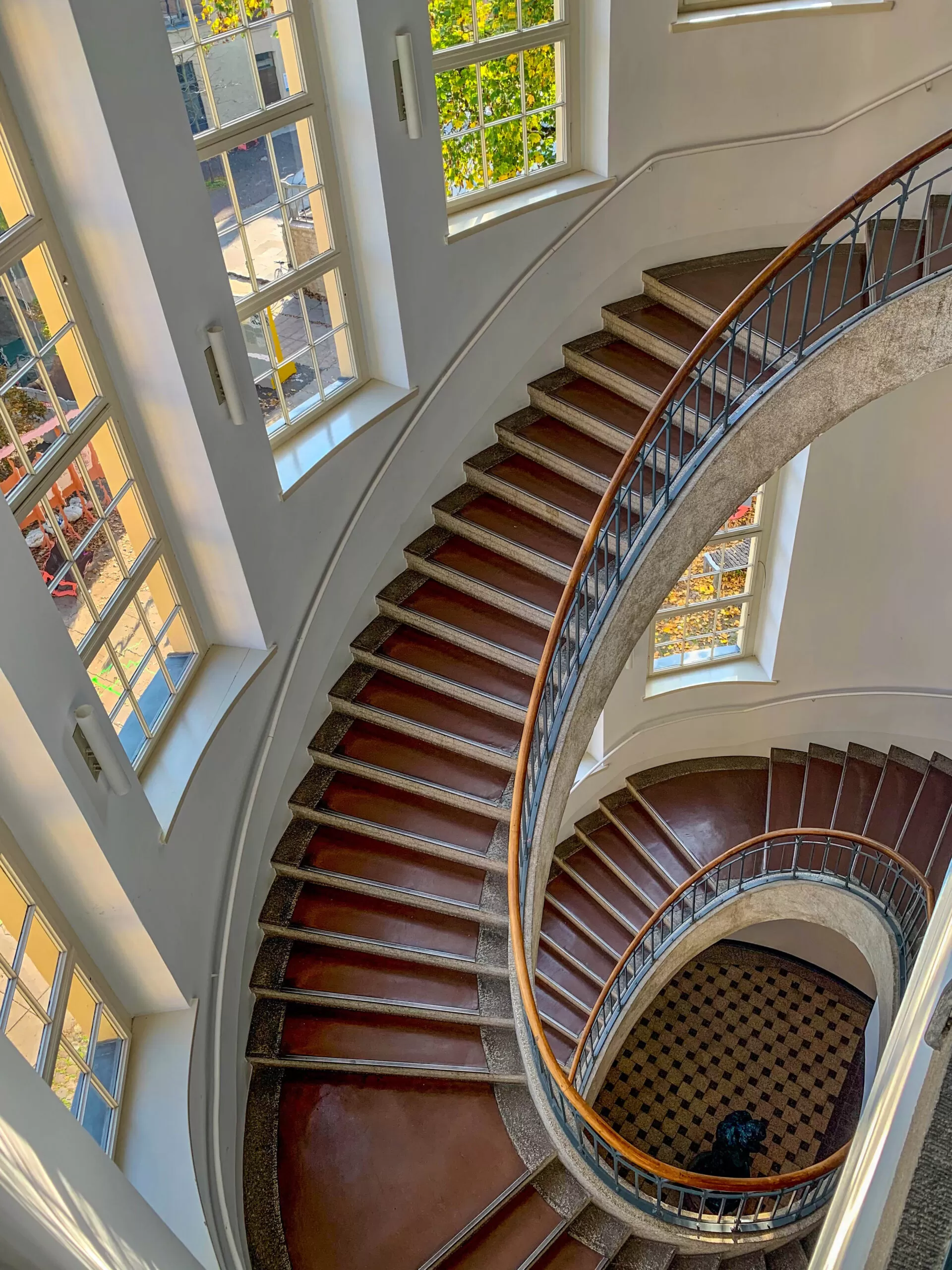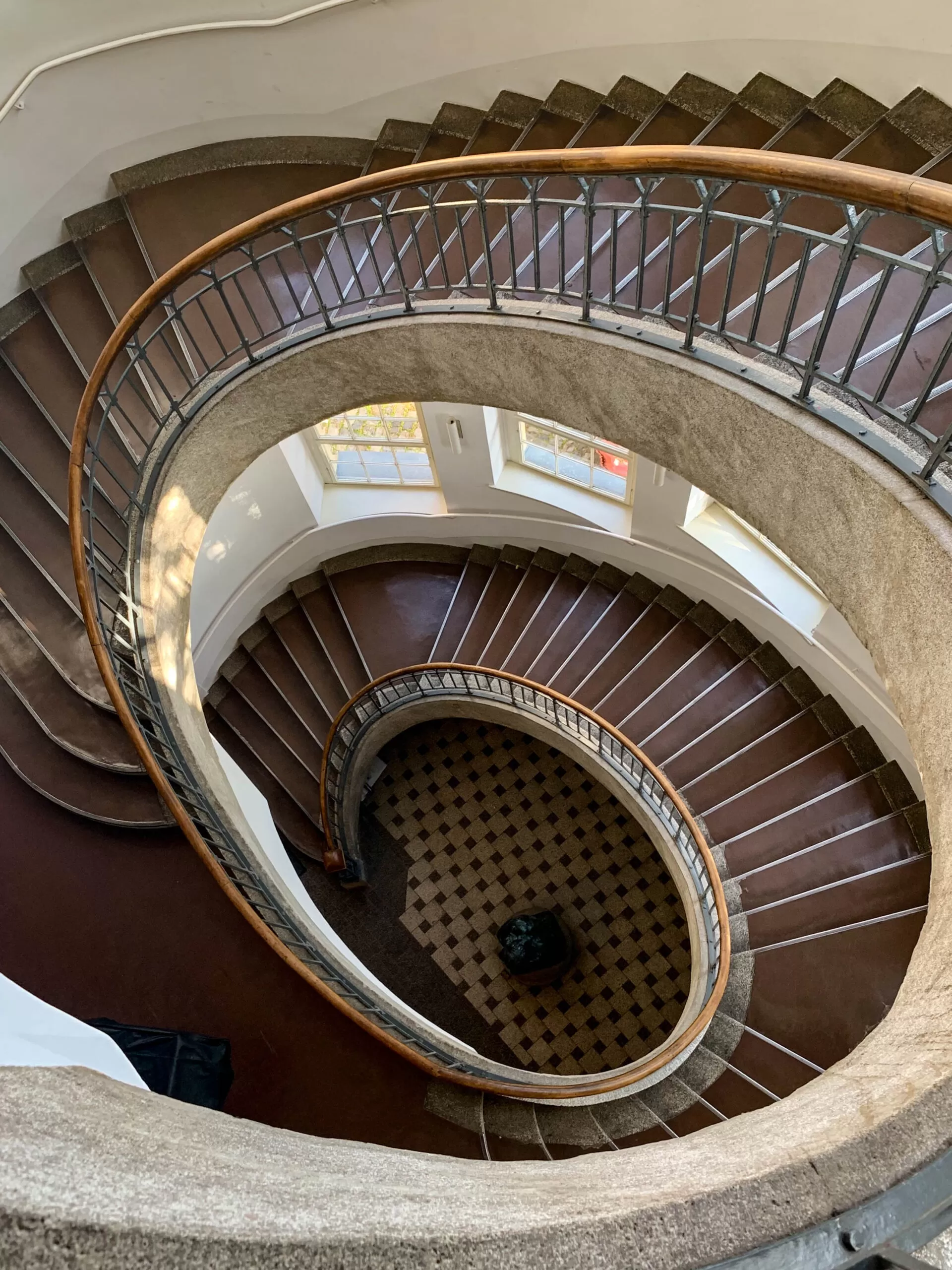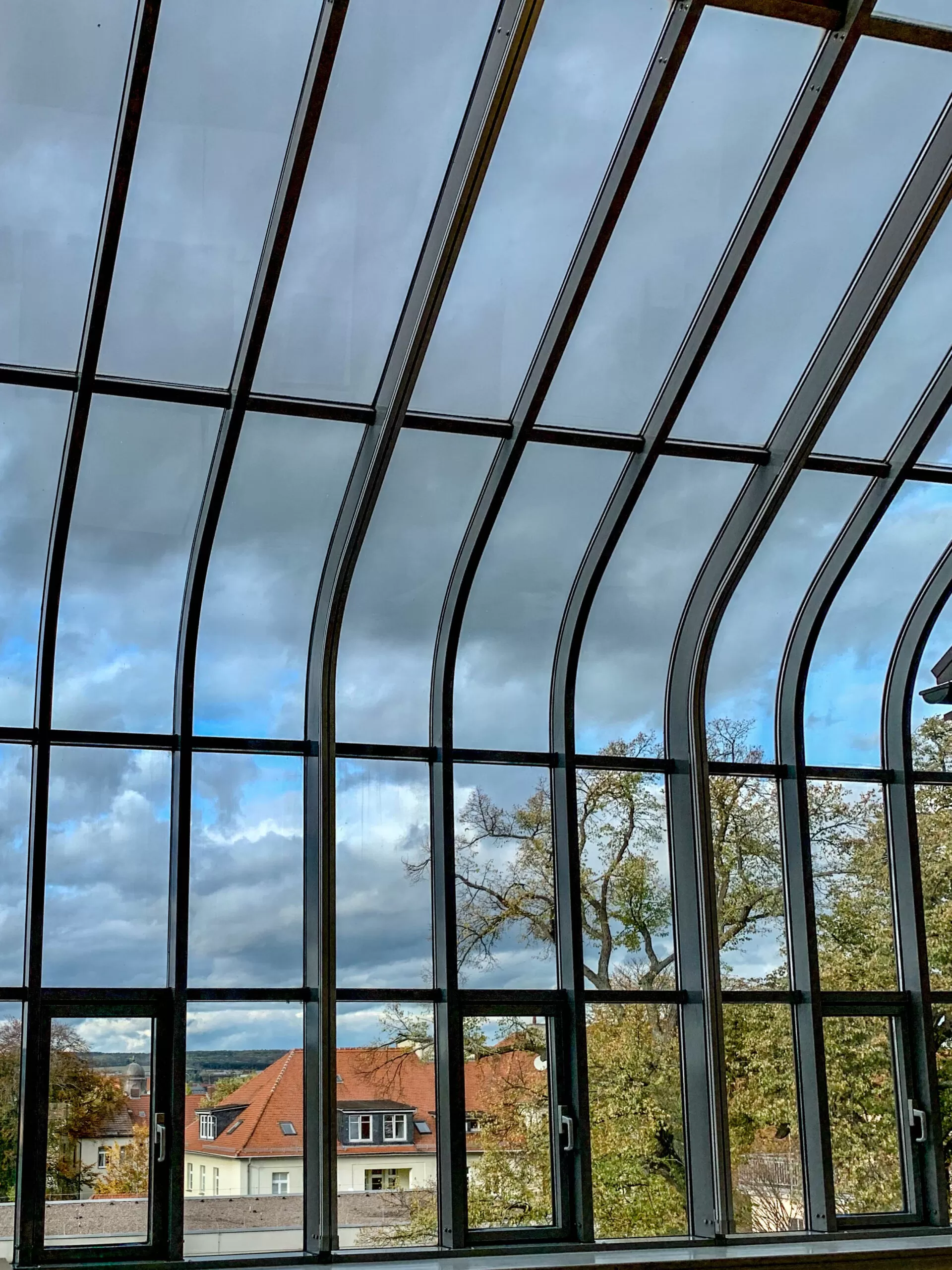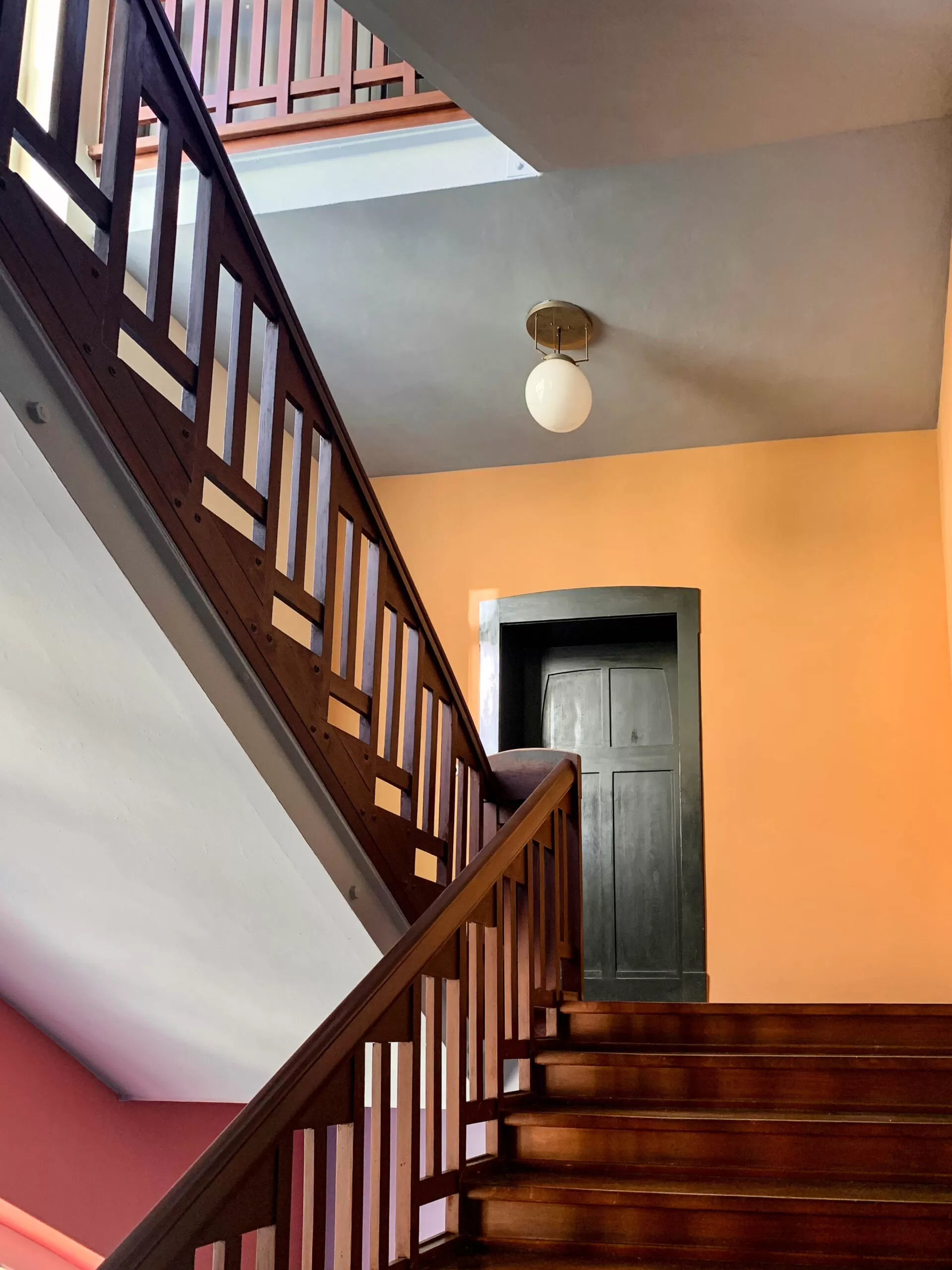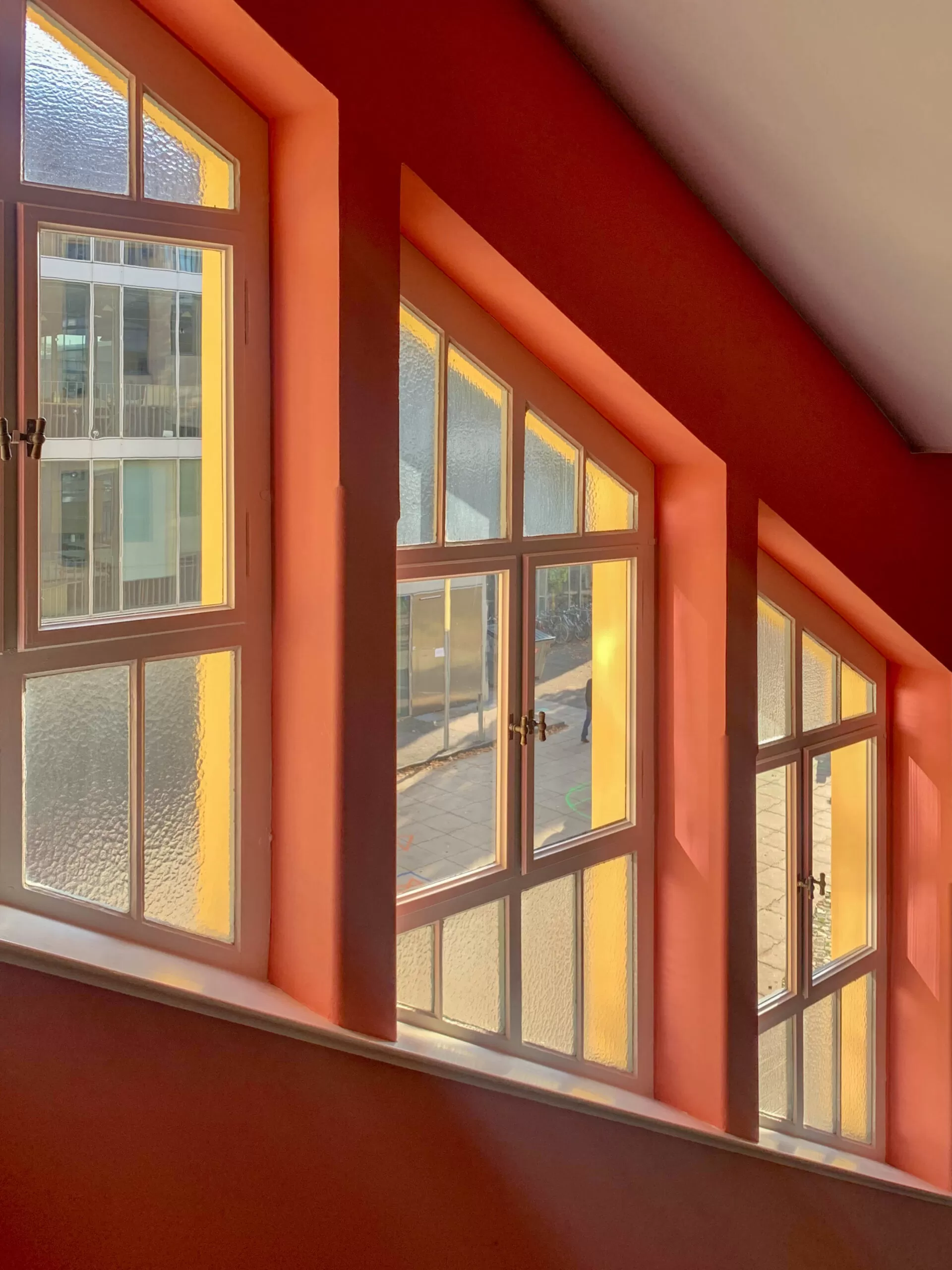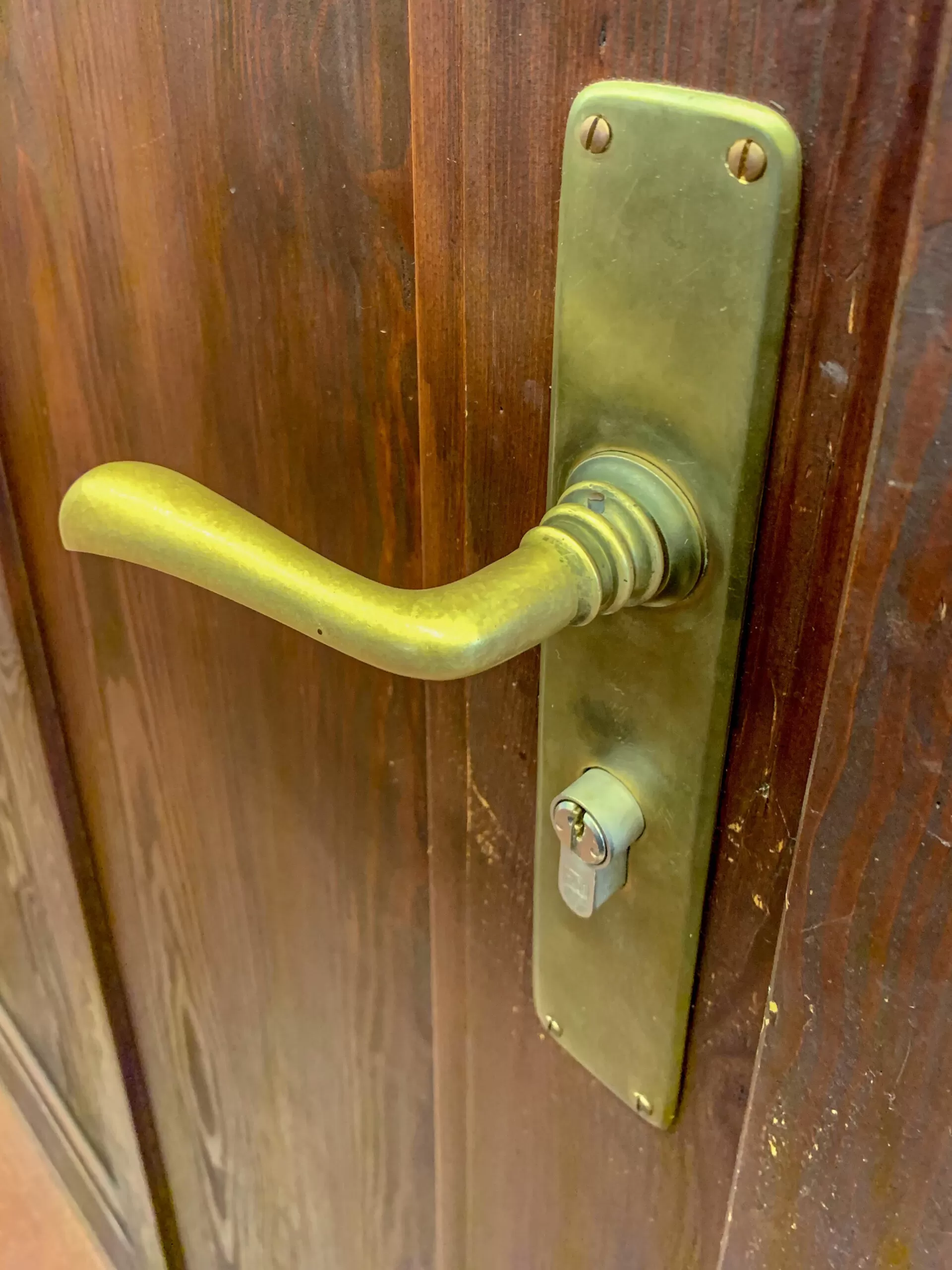1904 – 1911
Architect: Henry van de Velde
Geschwister-Scholl-Platz 8, Weimar
Former Grand-Ducal Saxon School of Art
From 1904 to 1911, the Grand-Ducal Saxon School of Art was built in two construction phases according to plans by Henry van de Velde.
Originally, a half-timbered building stood on this site, which housed the rooms of the art school and was generally known as the Art Barn. In 1904, an extension was added to the east.
From 1905 to 1906, a new building for the Grand-Ducal Saxon School of Arts and Crafts, directed by Henry van de Velde, followed opposite the school.
It was not until 1911 that a further extension of the school of arts was approved.
Building
The school in Weimar is one of the most important art school buildings of the turn of the century and was the founding site of the Bauhaus in 1919.
Instead of the half-timbered building, the central and western part with its characteristic studio windows was built.
The slightly recessed entrance leads via a windbreak and the large vestibule to the open, oval staircase.
In the eye of the elliptical, dynamically rising main staircase stands the figure of Eve by sculptor Auguste Rodin.
At the end of the corridors branching off to the side are the studios to the north, and ancillary rooms on the south side.
The main facade of the building impresses with the contrast of the pilasters, each of which combines two floors, with the glass surfaces in between.
Only in the central section do the pilasters extend to the third floor, which is integrated into the mansard roof with its curved studio windows.
Bauhaus University Weimar
Today, the building is used by the Faculty of Architecture and Urban Planning of the Bauhaus University Weimar and the office of the University President. Since 1996 it is a UNESCO World Heritage Site.

